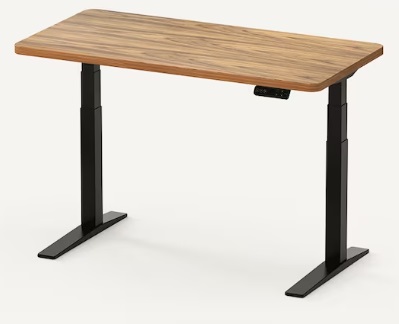In recent years, standing desks have gained popularity as a solution to combat the negative health effects of prolonged sitting. While these desks are praised for their potential to improve posture and reduce sedentary behavior, it’s essential to consider their environmental impact. In this article, we’ll explore the environmental aspects of standing desks and how they can contribute to a more sustainable workspace.
1. Materials and Manufacturing
Standing desks are typically made from various materials, including wood, metal, and plastic. The environmental impact of these materials depends on their sourcing and production methods. Sustainable standing desk manufacturers prioritize using responsibly sourced materials and eco-friendly production processes.
For instance, some companies use reclaimed wood or bamboo, which are renewable and have a lower environmental footprint compared to traditional hardwoods. Additionally, some manufacturers use powder-coated steel frames, which emit fewer volatile organic compounds (VOCs) during production.
2. Durability and Longevity
One of the key factors in the environmental impact of any product is its durability and longevity. Standing Desks often come with warranties ranging from 5 to 10 years, ensuring that they remain functional for an extended period. By investing in a high-quality standing desk, users can reduce the need for frequent replacements, which in turn reduces the overall environmental impact associated with manufacturing and disposal.
3. Energy Consumption
Electric standing desks are adjustable in height, making them convenient for users to switch between sitting and standing positions. However, they rely on electric motors to operate, which consume energy. The energy efficiency of these desks varies among different models and brands.
To minimize the environmental impact of electric standing desks, users can choose models with energy-efficient motors and standby modes that consume less power when not in use. Additionally, using a desk with a manual crank or pneumatic lift system eliminates the need for electricity altogether.
4. Transportation and Distribution
The transportation and distribution of standing desks also contribute to their environmental impact. These desks are often shipped in large boxes to customers, which requires energy for transportation and packaging materials. To mitigate this impact, some companies have started implementing eco-friendly packaging and transportation practices. Additionally, purchasing locally manufactured standing desks can reduce the carbon footprint associated with long-distance shipping.
5. The Life Cycle of Standing Desks
A holistic approach to assessing the environmental impact of standing desks involves considering their entire life cycle, from raw material extraction to disposal. Sustainability-conscious manufacturers prioritize recyclability and responsible disposal at the end of a desk’s life.
Many standing desk components, such as steel frames and aluminum legs, are recyclable. Wooden desk surfaces can be repurposed or recycled as well. Manufacturers may also offer take-back programs or recommendations for environmentally responsible disposal.
6. Promoting Sustainable Work Habits
Beyond the environmental impact of the desks themselves, standing desks can play a role in promoting sustainable work habits. When used to encourage regular standing and movement, these desks can help reduce the energy consumption associated with heating, cooling, and lighting in the office environment. Furthermore, healthier and more active employees may have a reduced need for healthcare services and can contribute to a more sustainable society.
Conclusion
Standing desks offer various health benefits and can contribute positively to the environment when used and manufactured responsibly. When considering the environmental impact of standing desks, it’s crucial to look at the materials used, the manufacturing process, energy consumption, transportation, and the entire product life cycle. By choosing sustainable options and adopting eco-friendly practices, individuals and organizations can minimize the environmental footprint of standing desks and contribute to a greener, more sustainable workspace. Ultimately, the goal should be to strike a balance between improving our health and protecting the planet we call home.
